Introduction
Welcome to a journey through time with the 1916 Vest Pocket Kodak Autographic Camera! In this blog post, I’ll be chatting about this vintage gem, not just for its age and old-timey charm but for the remarkable history it represents. Join me as we delve into the history, features, and sample photos captured with this fascinating piece of photographic heritage.
The Vest Pocket Kodak Camera – A Snapshot of History
Significance in the Early 20th Century
Manufactured by Eastman Kodak Company from from 1915 to 1926, the Vest Pocket Kodak Camera stands as an icon of the early 20th century, renowned for its widespread popularity and success. Over 2 million of these compact wonders were sold before the model was discontinued in 1926 and cost about $7.50, equivalent to about $225 today. Marketes as the “soldier’s camera,” its affordability and portability made it a hit around the world during this very historical time.
WW1 & The “Soldier’s Camera”
During World War I, this camera became an integral part of history, compact enough for soldiers to carry to the front lines. Despite initial resistance from military authorities, these cameras played a crucial role in revealing the harsh realities of war. Soldiers became documentarians, capturing moments that would have been lost to history otherwise. 1
To get better acquainted with the historical significance of this camera, I purchased a copy of Vest Pocket Kodak & The First World War, The: Camera & Conflict. I’m so glad I did! The more I delve into vintage camera collecting, the more exciting it is to research everything the camera experienced throughout history. This book put me in the shoes of the WWI battlefield events captured in photos by front line soldiers around the world. It also delves into the controversy of sharing frontline war shots with the press & general public, which was not encouraged, and there was even an attempt to ban soldier’s photography. If you have one of these cameras, I definitely recommend augmenting your collection with this book!
Shaping Photography History: Unique Characteristics & Innovations
This camera saw several versions throughout its production, and I’m fortunate to have stumbled upon an early 1916 model. One of the Vest Pocket Kodak’s standout features was the “autographic” capability, allowing photographers to inscribe notes directly onto the film’s backing paper—a unique innovation of its time. Although this feature is not compatible with modern 127 film (that I’ve found so far), it was a major selling point for this camera back in the day. The Vest Pocket Kodak played a pivotal role in popularizing photography in the early 20th century, helping democratize this art form. 2
127 Film: Capturing an Era
Kodak created the 127 film format specifically for the Vest Pocket Kodak. Up to this time, films had been identified by the type of camera they fitted. To simplify things, a consecutive numbering system, starting from 101, was adopted, with numbers allocated in the order in which the various film sizes first appeared. Film for the VPK was the 27th roll film format to be produced and became 127 film. At the time, it was incredibly popular, but the Great Depression posed challenges for this film format. The economic downturn led to the rise of other film types that could capture more shots for less money, eventually causing a decline in the popularity of 127 film. Despite this, it remained in use until Kodak ceased production in 1995. Some retailers still produce & sell this film though if you’re looking for 127 film for your own camera! 2 3
Getting Acquainted with the Vest Pocket Kodak
Let’s take a closer look at the physical attributes of the Vest Pocket Kodak. Its small size, measuring just 1 by 2½ by 4¾ inches when closed, and aluminum construction marked a departure from older materials or more complicated cameras of its time. Here is the VPK compared to my iPhone 13 Pro:
As mentioned previously, it featured an area on the camera back where photographers could open a tiny window and write notes on the film’s backing paper—a defining “autographic” feature that is no longer compatible with modern 127 film.
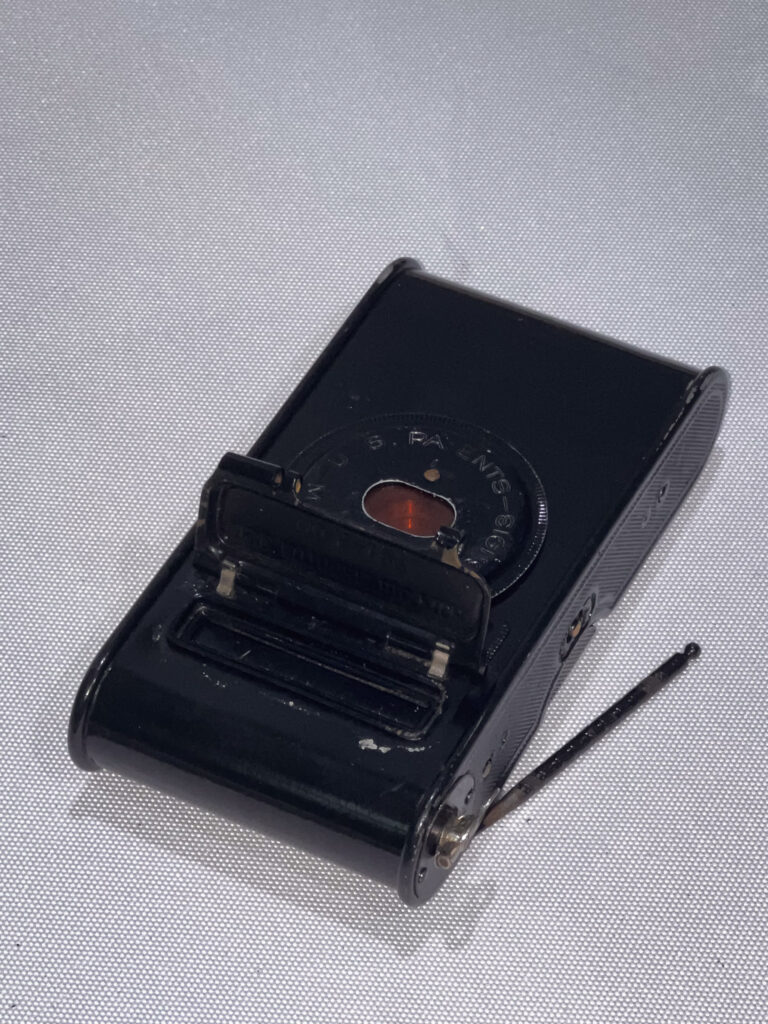
I stumbled across this camera while at an antique shop on my birthday, and considering its age, I was thrilled with its condition. Other than some paint scuffs, it had minimal signs of wear and tear and the bellows in excellent shape. I have a feeling that this treasure spent most of its life in storage, or was perhaps barely used over the years. The wonder of the piece’s history is part of the fun of collecting, and though I wish I could know more, I am very excited to have it in my hands! 2
A Date with Nostalgia – Testing the Vest Pocket Kodak
Now for the fun & most anticipated part of this journey – shooting with the Vest Pocket Kodak! Despite its age, this camera still held its own. I used ReraPan 400 Black and White Negative Film film that I was lucky enough to have found on B & H Photo. Like pairing cheese with fine wine, when testing out this camera for the first time I felt inclined to choose a shooting location that paired well with the age of the camera. I ended up choosing my hometown’s Flowery Branch old town square with a late 1800’s railway system and many retired buildings. As I captured images with this vintage camera, I couldn’t help but feel a bit nostalgic. I shot one roll at the old town square, but once I got home I ended up shooting one more roll on my family’s dock on the lake.
Developing the Past – Sample Photos
Let’s dive into the visual results of this historical journey. I’ll showcase a selection of sample photos captured with the Vest Pocket Kodak, highlighting its unique aesthetic and distinctive characteristics. I also brought my Sony Alpha Mirrorless camera with me to compare a century’s worth of camera innovations. Join me in exploring the world through the lens of this vintage gem:
Raw developed photo
Post-prod edited photo
Reference shot
Extra Photos From our lake Dock shoot session
Personal Reflections
Light Leaks:
There is a lot to learn about shooting this camera — first things first is recognizing the light leaks from the Old Town Flowery Branch film roll. You can see light leaks on the sides of several photos, and you can also see the numbers from the paperback film roll faded into the photo. I checked the bellows, and there were no light leaks resulting from any cracked leather. What ended up being the culprit is that while I was packing the first roll of film into the camera, I accidentally let the roll unravel a bit. I packed the second roll of film without any unravelling and the second roll was much better.
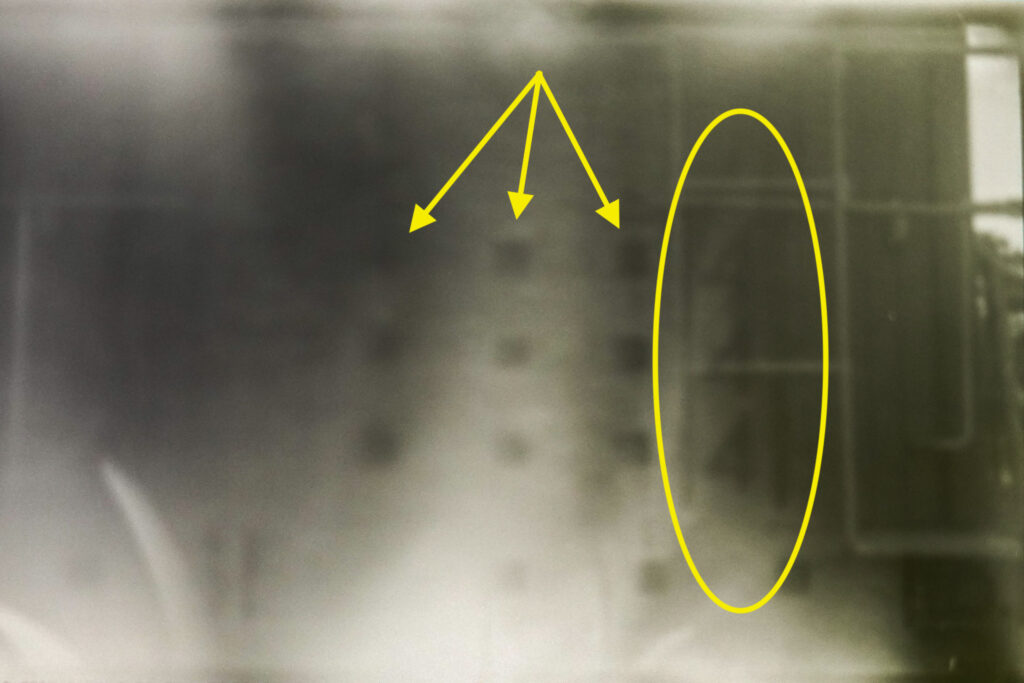
Blurriness:
No amount of post production editing can compensate for a blurry photo, especially blur this bad. I had one [relatively] clear photo from the top level of the dock overlooking the lake, but every other photo had at least some level of blurriness. Considering most of the other photos were more close-up, I felt there was a user error to learn from here. For the Vest Pocket Kodak, there is no direct control for focus like more modern cameras have. Instead, the focus is tied to depth of field defined by the aperture on the front of the camera.
Vest Pocket Kodak Shutter Speeds
The Vest Pocket Kodak had a ball-bearing shutter with a couple different speed options. There are 4 options above the lens:
1/25 of a second
“B” for Bulb – the shutter stays open so long as you press the exposure lever. This used to give time for photographers to trigger a flash bulb or light flash paper.
“T” for Time – You press once to open the shutter and then press again to close the shutter after a time interval. This holds the shutter open for longer so that more light can reach the film.
1/50 of a second – I primarily used the 1/50th setting
Vest Pocket Kodak Focus & Aperture
This part of the Vest Pocket Kodak varied greatly from model to model. There were several renditions of this camera, some with more focus/aperture options and some with less.
My version of the Vest Pocket Kodak has 6 options ranging from F7.7 – F32: Moving Objects (F 7.7), Portrait (F11), Near View, Average View (F16), Distant View (F22), and Marine/Clouds/Snow (F32).
My Mistake: I believe my mistake that caused the blurry photos was my lack of attention to the aperture & depth of field. As a nature photographer, I often stick with smaller apertures for sunny day shoots, and most of my other cameras have either manual focus or auto focus controls. In retrospect & for future shooting, I have to keep in mind that this camera’s operations are fairly simple and I have to pay more attention to close up vs landscape depth of field. Just FYI, this camera has a 75-millimeter meniscus lens with a minimum focal length of around two meters.
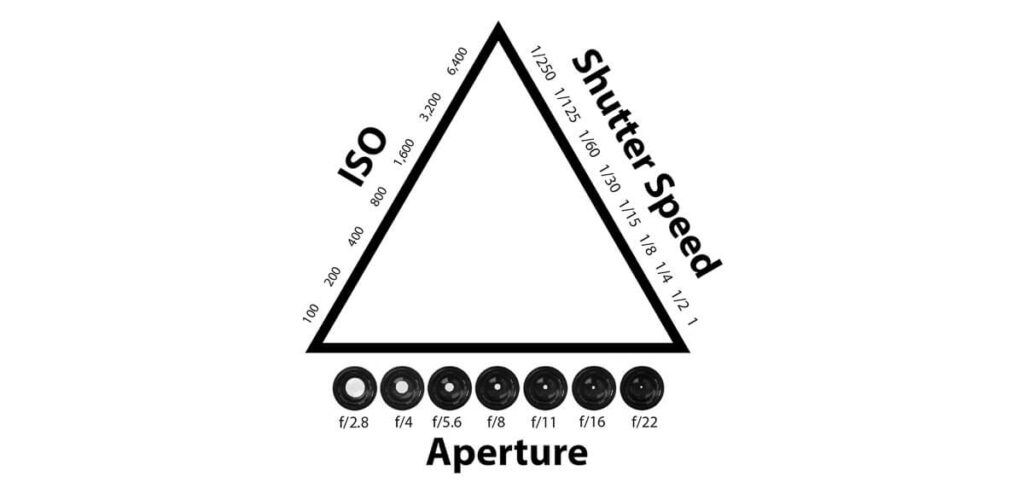
Preserving the Legacy – Caring for Vintage Cameras
One effort I want to delve more into is how to clean and restore vintage cameras, which is not something I have much experience in yet. Whether the cameras were in storage or in contant use, almost all vintage cameras need a little bit of TLC to get to their full operating potential. A goal of mine in the upcoming months is to learn more about the assembly of my vintage cameras and how to clean them properly. For those interested in vintage cameras like the Vest Pocket Kodak, stay tuned! As I explore and learn more about using older cameras, I’ll offer valuable advice on how to properly care for and maintain them. Additionally, I’ll provide tips & resources for where to find gear, what to know about it, what to avoid, and more.
Video Resources
There are several helpful video resources out there for learning & using Vest Pocket Kodaks! See below for videos that helped me begin my VPK journey:
Conclusion
In closing, my discovery of the 1916 Vest Pocket Kodak Autographic Camera has been a remarkable adventure that I’m excited to continue! It’s a testament to the enduring charm and historical significance of vintage cameras. I invite you to explore the world of vintage photography and share your own experiences.
Closing Note
I’m grateful for the opportunity to share my passion for vintage cameras with you fellow shutterbugs! Your comments, questions, and shared experiences are greatly appreciated!
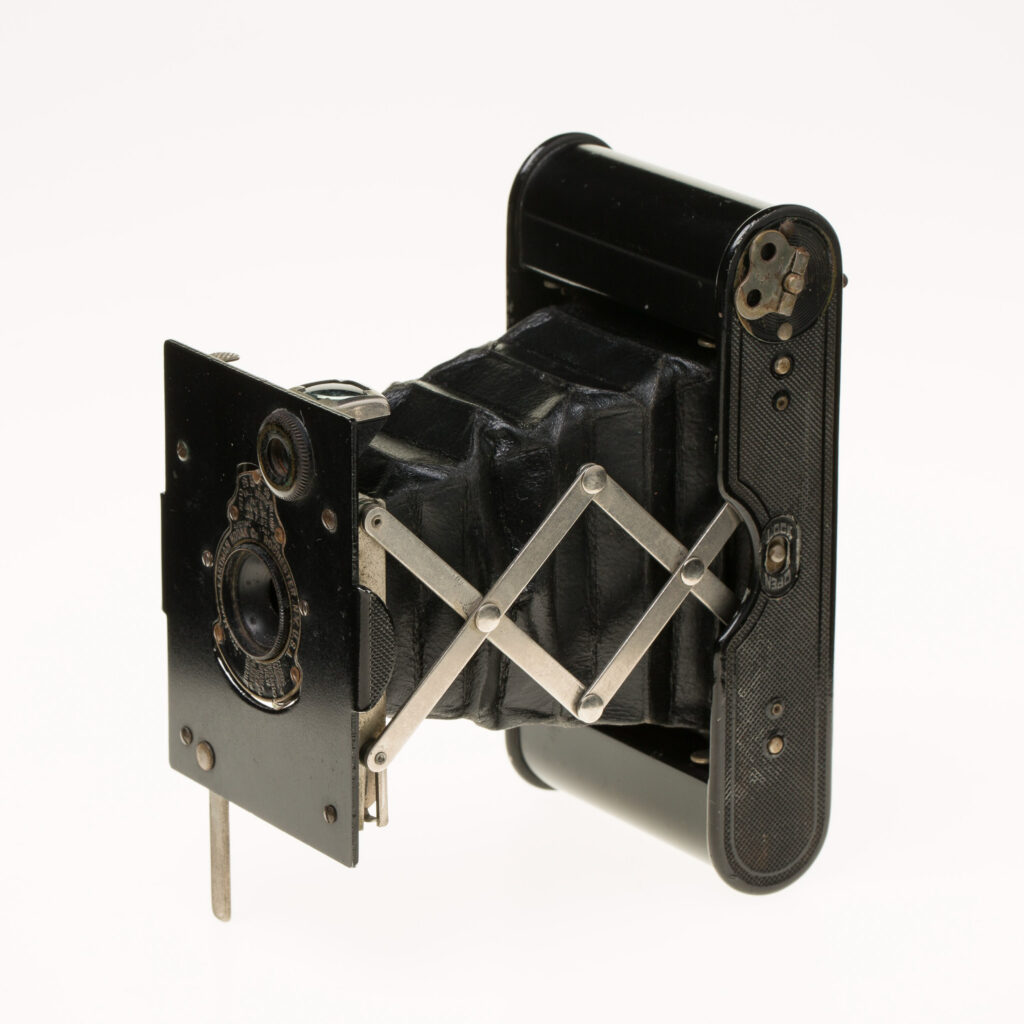
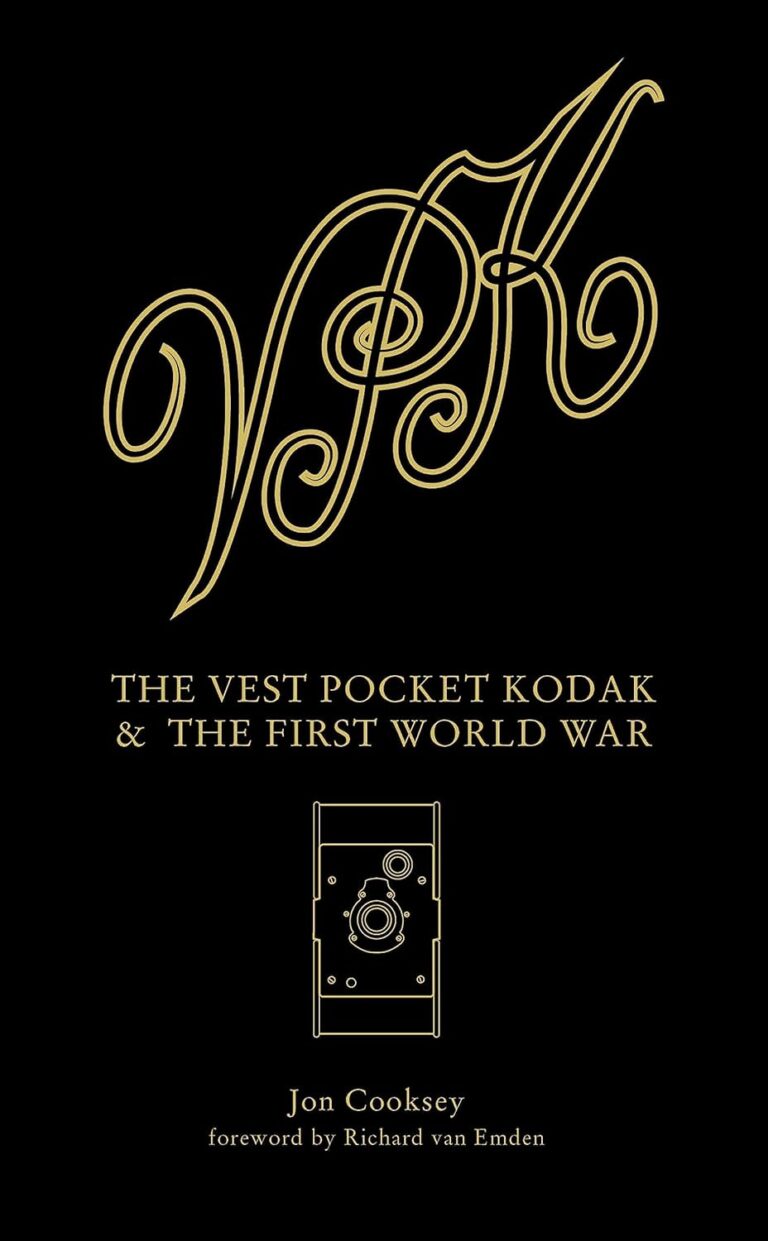
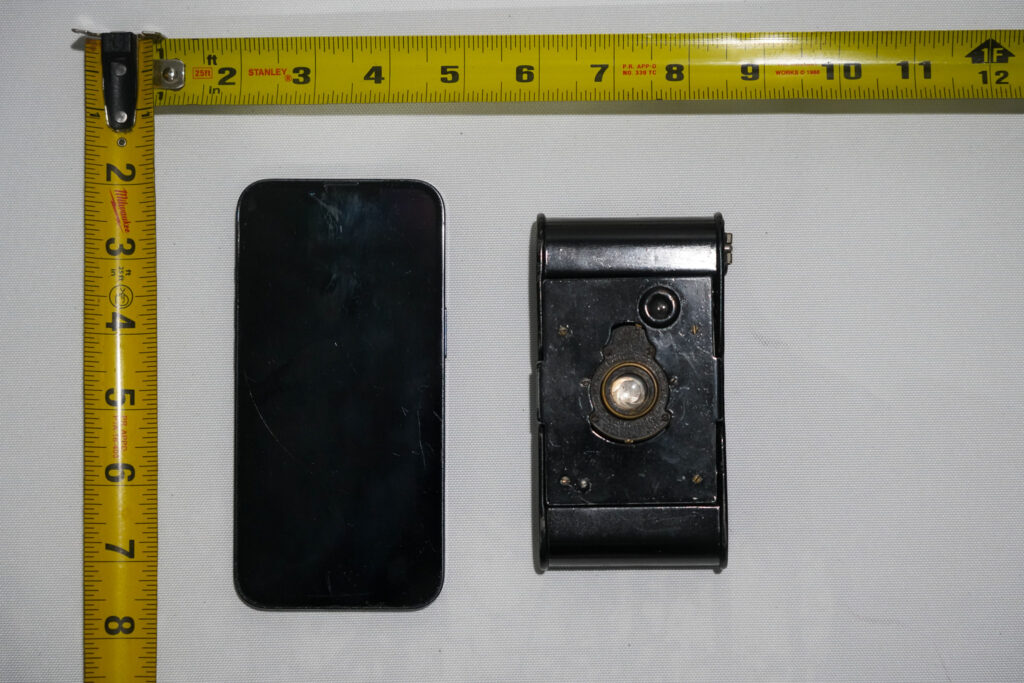
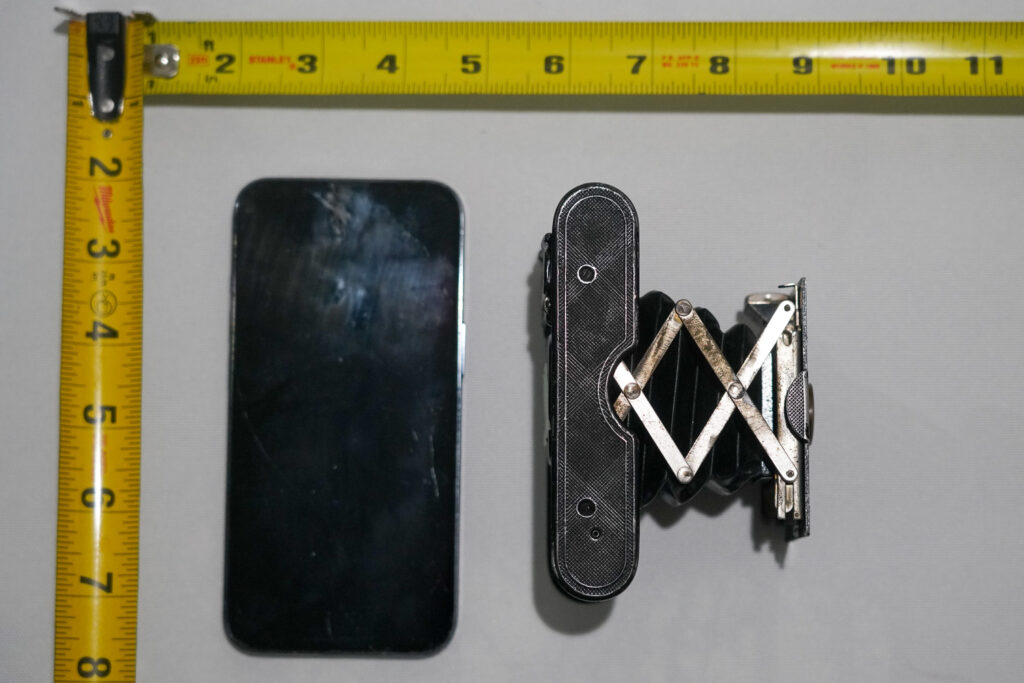
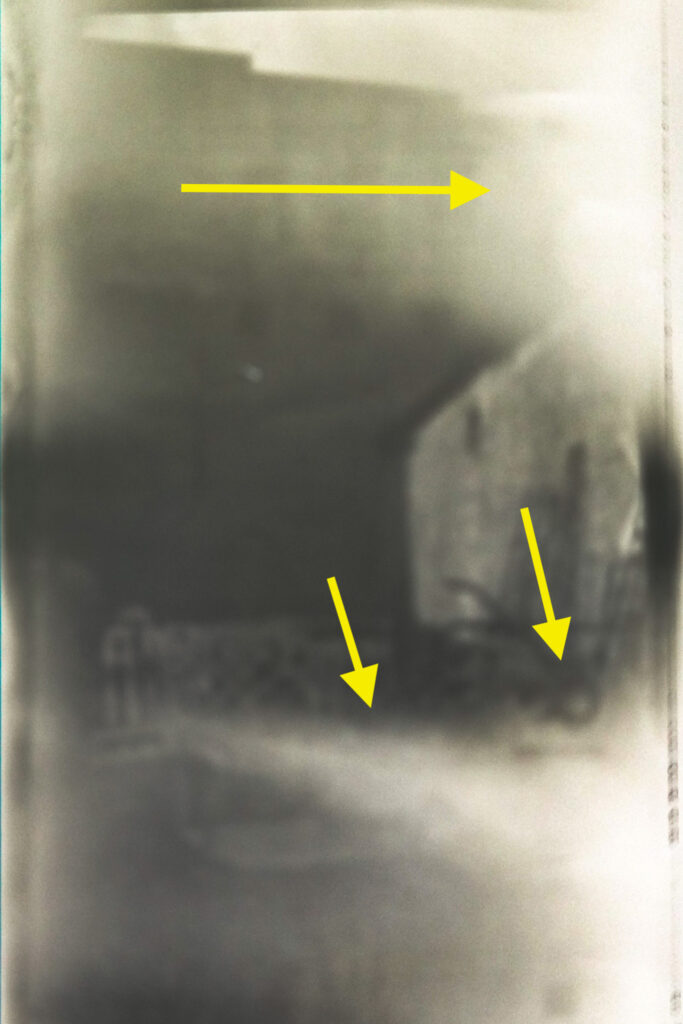
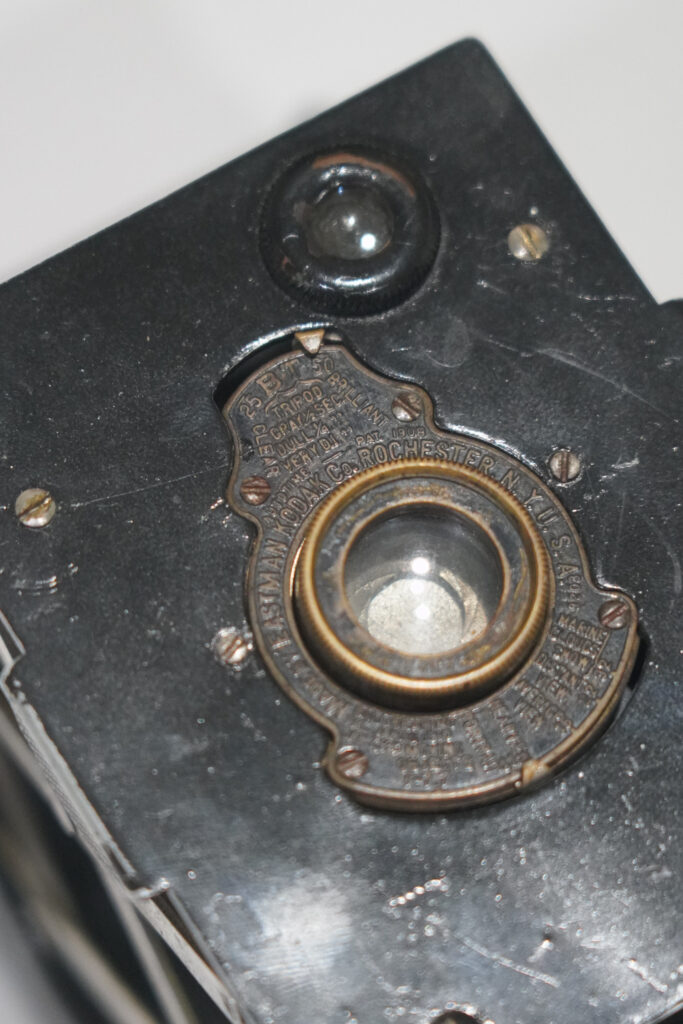
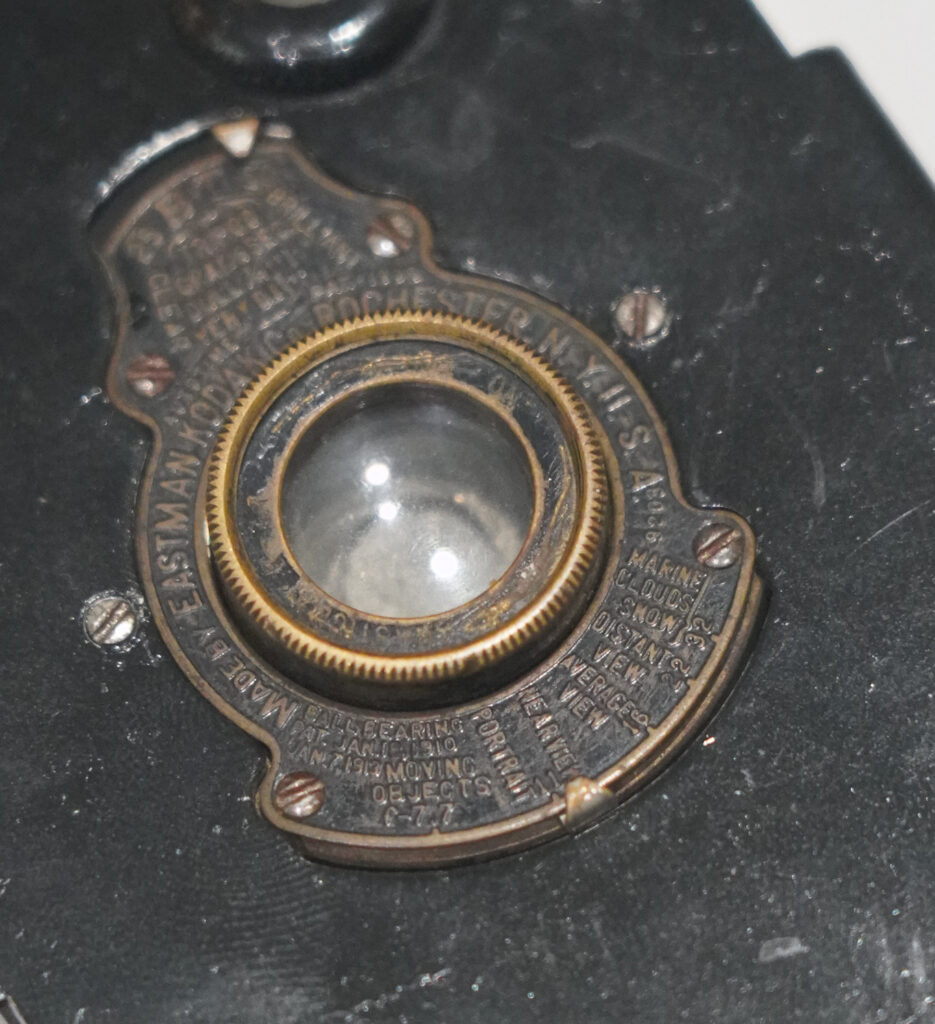



Previous Post
From Digital Ease to Manual Mastery: Tips & Tricks for Mamiya RZ67 Beginners